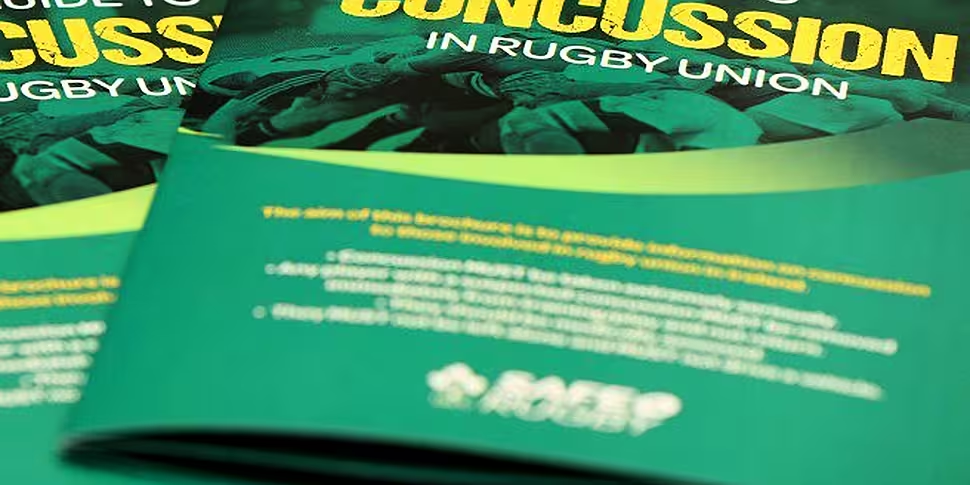The discourse this week in Irish Rugby will once again be dominated by Johnny Sexton after he suffered a suspected concussion in Leinster’s Champions Cup victory over Exeter Chiefs a week ago.
The story and the commentary that surrounds it will likely frustrate Sexton who has previously expressed unhappiness with the regularity at which pundits discuss his history of concussion despite not holding any access to his medical information.
Sexton’s irritation is understandable, through no fault of his own, confusion reigned in the wake of his withdrawal to undergo the HIA 1 in the early stages of their victory at the Aviva Stadium.
Head coach Leo Cullen said after the game that the decision not to reintroduce the out-half was the result of his failure to pass the HIA, the protocol is designed to identify concussive episodes and combines cognitive, balance and memory tests.
Experts from the Zurich Concussion Consensus Group developed the test in an effort to assist medics in making the correct decision following a head impact on the field.
Cullen was contradicted hours later by Ireland head coach Joe Schmidt, who stopped to correct Joanne Cantwell when she referenced Sexton’s failed HIA during an interview on TV at the RTÉ Sports Awards.
Joe Schmidt on O'Mahony deal, Sexton HIA and a good week for the Irish provinces #rtesportawards #rterugby pic.twitter.com/OwPqiLcGxg
— RTÉ Sport (@RTEsport) December 17, 2017
"He passed his HIA, he’s okay, I spoke to him this evening. He’s fine, he’s likely to be back playing."
On Tuesday, Leinster issued an update saying: “Leinster is happy to clarify that he (Sexton) failed HIA 1 and is currently following return to play protocols.”
Joe says Johnny says he passed, Leinster says the doctor says he failed. The confusing contradictions are unhelpful in the situation. A player either passes or fails the HIA, there is no grey area? Wrong, apparently he passed elements of the four part test.
Which perhaps was the cause of the confusion, it is hard to know because the IRFU declined the opportunity to clarify the head coach's comments.
The province described the confusion surrounding Joe Schmidt’s statements on Saturday as "unfortunate" but chalked it down to a "misunderstanding" and “nothing more”.
Both Leinster and the IRFU have a clear understanding of the protocols in place and the steps taken in the minutes, hours and days after a player suffers a concussion. Their failure on this occasion was to communicate that properly.
The test is multi faceted and naturally complicated, most rugby fans will not have seen the below document, so while it remains unclear why the mixed messages came from the IRFU's main man and Leinster rugby, we can shed some light on the process that took place in the immediate aftermath of the impact.
The HIA is a three-stage process to assist with the identification, diagnosis and management of head impact events with the potential for a concussion.
In stage 1, players who sustain head impact events with the potential for a concussion are identified by match officials, team doctors or independent match-day doctors.
The identification is either by direct observation or on video review.
The HIA 1 has four components and they are:
a) 11 immediate and permanent removal criteria
b) an off-field screening tool
c) pitch-side video review
d) clinical evaluation by the attending doctor
The HIA 1 assessment is not limited to the off-field screening tool. Instead, the off-field screening tool is one component of the comprehensive assessment.
Players displaying obvious on-pitch signs of concussion (confirmed loss of consciousness, appearing dazed, poor balance, tonic posturing, confusion, convulsion) are immediately and permanently removed from play, and the completion of the off-field screening tool and medical evaluation is not needed.
Any other cases, where players have the potential for concussion but show no clear on-pitch symptoms or signs, undergo an off-field assessment consisting of a medical room clinical evaluation by an attending doctor supported by the screening tool, and video review.
The off-field screening tool is a re-formatted Sports Concussion Assessment Tool (SCAT 5), the pitch-side assessment tool recommended by experts from the international concussion consensus meeting.
This off-field screening tool includes a check of symptoms, memory assessment and balance evaluation.
The results of this off-field assessment are compared to a previously conducted ‘baseline assessment'.
An abnormal screening tool result is indicated if the score is different from that player’s baseline assessment or the normative score and confirms a suspected concussion.
Any player with an abnormal off-field assessment or if there is a clinical opinion of suspected concussion is removed from the game.
The team doctor has the primary responsibility for conducting the off-field screen, but can delegate this role to the match-day doctor.
Video review has three roles in stage 1 of the HIA protocol. Firstly, during play, independent match-day doctors can supplement side-line observation with video reviews of incidents to identify any head impact events requiring removal from play or removal for further side-line assessment.
At this point, the decision of the match day doctor is simply that the player be removed. A second video review is then undertaken with the match day doctor and team doctor present.
The final use of video is a review after the off-field assessment, where video is again reviewed prior to a player being returned to play.
After the game, HIA 2 comprises early medical evaluation within 3 hours post-match to assess clinical progress and determine an early diagnosis of concussion.
Further medical testing performed after two nights rest constitutes HIA 3 and that is used to assess clinical progress and to confirm the diagnosis of concussion.
















